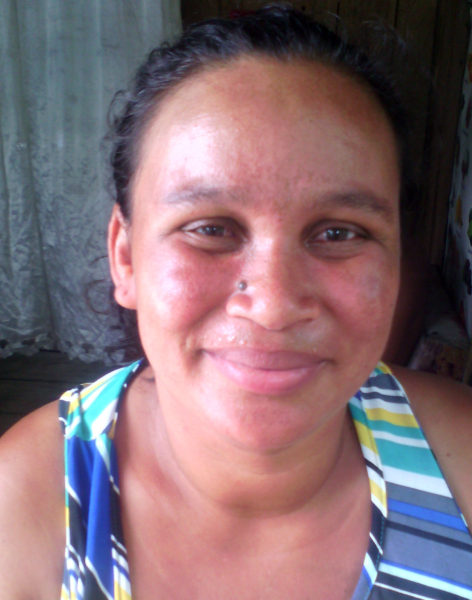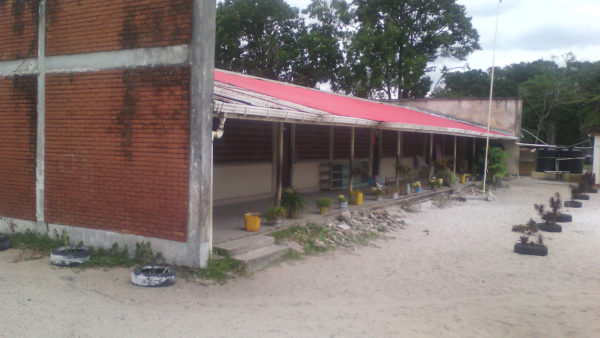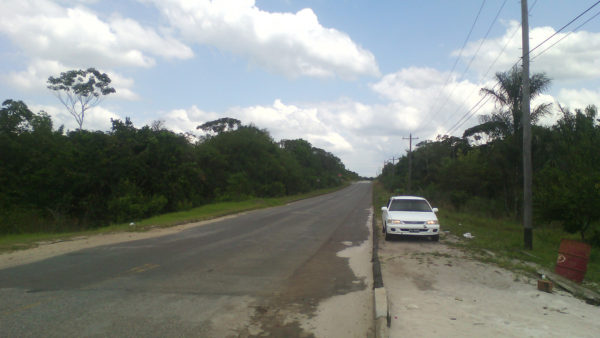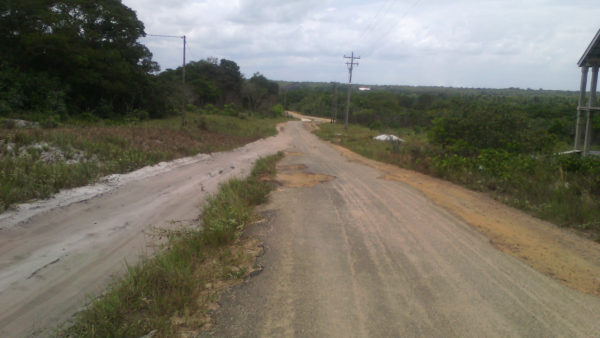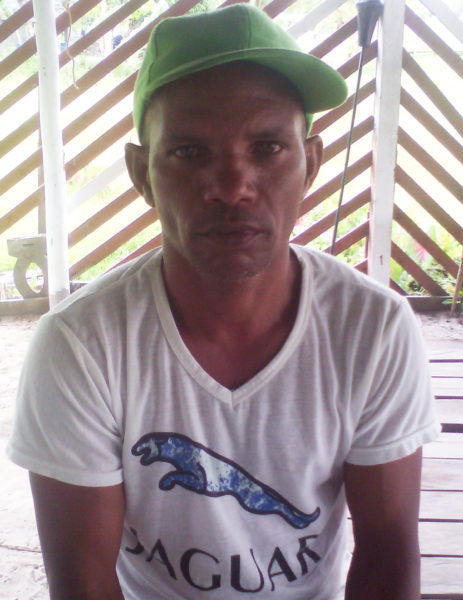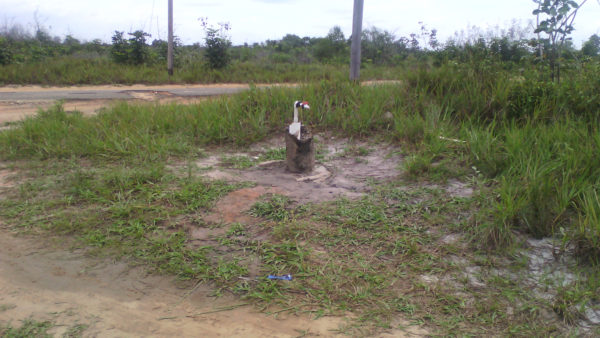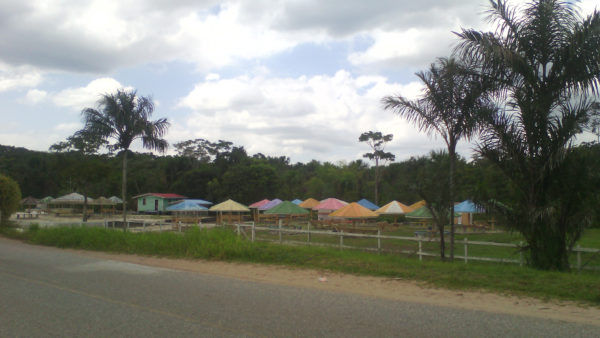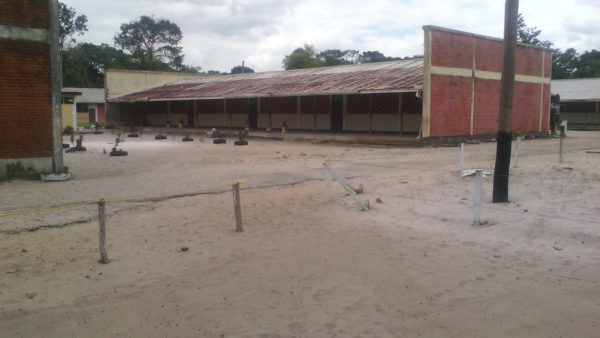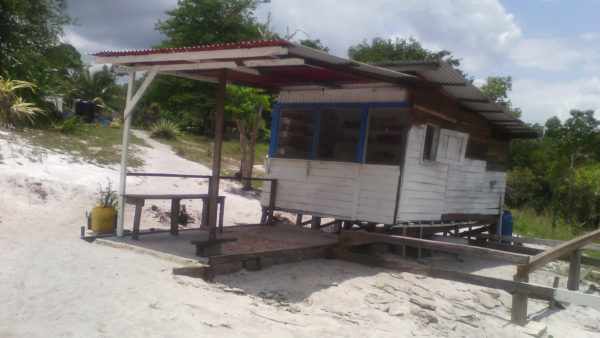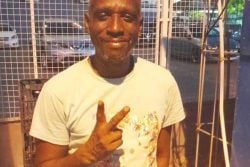The road to Kuru Kuru, which is situated along the Linden-Soesdyke Highway, is long and arduous. It has some sharp cut-offs and loads of sand on both sides. It is pitched, but in a terrible state, narrow and broken-up so that vehicles drive half off-half on the road. Drivers try hard not to get their tyres punctured by the sharp zig-zag edges of the road while at the same time trying to stay away from the sand so that their vehicles don’t get stuck.
The Kuru Kuru Primary School sign near the top of the road is deceptive. Ten minutes’ drive along the rugged terrain, there’s no school in sight. Asked, a passing resident looks up and says, “Just follow the road.” Another ten minutes or more and there’s the school right at the end of the road. The compound houses not only the Kuru Kuru Primary School but the Kuru Kuru Training College, the Nursery and Secondary schools as well. Seated under the shade of trees around tables were the parents of the students who were visiting their children attending the training college.
At a junction of the street and the Main Road is a standpipe. The area around it was wet, indicating that someone had recently filled a bucket. In Kuru Kuru villagers either walk to the standpipe, fill from the creeks or catch rain water.
Shopkeeper Shamiela Rodrigues was attending to two customers when the World Beyond Georgetown visited.
Rodrigues, who moved to Kuru Kuru with her parents and eleven siblings 28 years ago, lives with her husband just a stone’s throw away from her mother. With no electricity, she like most of the other villagers has solar panels on her roof. She is still able to watch television or listen to music on her CD player. Even the freezers in her shop are supported by this method of power generation. However, in the afternoons, she buys ice to stock the freezers overnight.
Water to wash and bathe is usually fetched from the creeks, Rodrigues said but to cook and drink, they use rain water stored in the black tanks.
She takes a taxi to Soesdyke to buy groceries to stock her shop. And although it’s a long drive there she still manages to sell at a reasonable price. Rodrigues said she keeps her prices low since many persons can also travel to Soesdyke to purchase groceries and business is slow.
She, in turn, purchases fruits and vegetables from village farmers.
Rodrigues said she would like to see the road looked into and that something is done to improve its present state. She wishes too that residents would be granted their land titles.
Though she hasn’t an easy life where necessities such as water and light are available, Rodrigues says likes it at Kuru Kuru, mainly because of the simple way of life.
Nearby, Melisa Blake lives with her children and husband. She has been living there for a number of years and according to her although it’s bushy now, it was worse then.
Blake once had a thriving kitchen garden with okra and pepper as well as avocado, golden apple, pineapple and coconut trees until the Acushi ants cut them down. “The Acushi ants clean up everything. They cut down the plants in the night. You might see a plant now; next morning you don’t see anything. They got their nests more in the bush by the creek,” she said. However, Blake is determined on having the garden back up and running soon and has already started planting some pineapples.
Her children attend the Kuru Kuru Primary and Nursery schools. A bus picks them up at 7.30 am; school commences at 8.30 am and ends at 2.30 in the afternoons. Blake said she takes her baby to the health centre situated in the next village, Long Creek, three miles away. When emergencies arise, villagers would travel to either the Diamond Hospital situated on the East Bank Demerara or the McKenzie Hospital in Linden. According to Blake, although Diamond is closer, persons prefer to travel to Linden to avoid the traffic.
According to her, the village needs to provide jobs for its people; they need to have potable water and electricity available to them. Blake likes the fact that her children can play noisily without disturbing the neighbours around and also, that persons can play their music loudly whenever they like without starting an altercation. On Saturdays she attends the Little Eden Seventh Day Adventist Church with her family.
The Umbrella Resort is situated in Kuru Kuru also. People travel from all over Guyana on the weekend to hang out and swim in the cool, black creek water. Although visitors are asked to pay a small fee of three hundred dollars; the villagers of Kuru Kuru enjoy this convenience for free. Mark Lindie is a well-known villager, farmer and shopkeeper. He left New Amsterdam 18 years ago to live at Kuru Kuru after seeing the village once. “It is a small community,” he said, “probably about 600 persons. I like the fresh air and the black water here. I plant eddoes, plantain, bananas and other fruits. We supply Bourda and Stabroek markets,” he said.
“The people here are nice. Everybody does cooperate with each other. We have no thieves here and we don’t have a problem with fish; we get a lot of fish from the creeks,” he said.
However there are certain challenges. “I would like to see street lights along the highway. Plus the road to the college is really bad. We would also like a medical facility in the village.
“Another problem is the transportation in the mornings. In the mornings it difficult to get transportation; the Linden buses pass through the village full since they full up with passengers from Linden and then you got to wait a long time on the road before you can get anything.
“But water is the ‘big man’. When there’s no rain, persons got to use the water from the creeks to drink.”
The residents of Kuru Kuru provide for themselves and families working as teachers, security guards and farmers and some work away in the interior. Others are self-employed.
According to Lindie, he hopes to lower the unemployment rate when he opens a resort and motel later this year.
